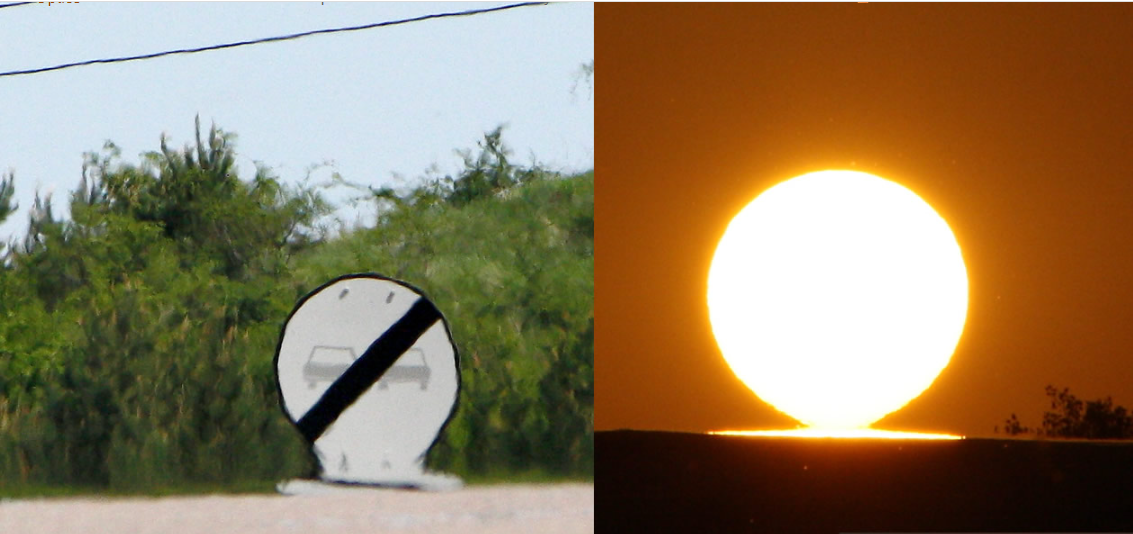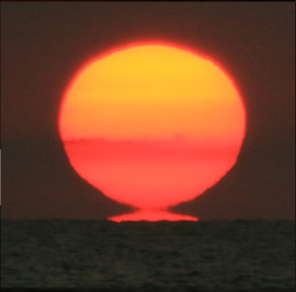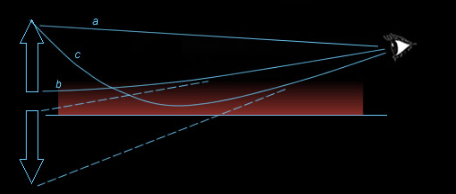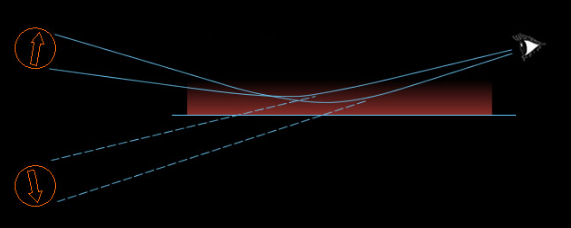OPOD - Omega Road Signs & Sunsets
OPOD - Omega Road Signs & Sunsets: A Fascinating Atmospheric Optics Phenomenon
Have you ever witnessed a mesmerizing sunset that seemed to defy reality? The Omega Sunset Mirage is a captivating atmospheric optics phenomenon that can transform the appearance of the setting sun into a replica of an 'omega' or 'Etruscan Vase' shape. This optical illusion occurs when a layer of warm air lies beneath cooler air, causing light rays to bend and create mirages. In this blog post, we will delve deeper into the science behind Omega Suns and Road Mirages, exploring the factors that contribute to their formation and the intriguing visual effects they produce.
The Role of Temperature Gradients in Omega Sunset Mirages
Attila Kovács, a skilled photographer, has beautifully captured the essence of Omega Sunset Mirages through his stunning images. These images vividly demonstrate that these mirages are the result of a stark temperature difference between the lower hot air and the upper cooler air. For instance, in one of Attila's photographs, he measured the air temperature to be around 30°C while the road surface temperature reached a scorching 50-52°C. This significant temperature gradient of 20-22°C between the layers creates the perfect conditions for the formation of an Omega Sunset Mirage.
The Mirage Creation Process Unveiled
To understand how Omega Sunset Mirages come into existence, let's take a closer look at the interplay between light rays and temperature gradients. As the setting sun nears the horizon or a hot road surface, a second upside-down segment of the sun appears to rise up and meet it. This optical illusion occurs because rays of light need to cross different layers of air before reaching our eyes, resulting in an inverted image formation.
In the presence of a hot air layer close to the ground, a mirage is generated. Rays of light passing through the upper cool air experience minimal deflection, while those passing through the temperature gradient at the cool/hot air junction are significantly refracted. As a result, the upward-going rays appear to originate from an object beneath the ground, deceiving our eyes. The crossing of these two rays forms a mirror image, leading to the distinctive omega or Etruscan Vase shape observed in Omega Sunset Mirages.
The Enigmatic Nature of Mirages
Mirages, including Omega Sunset Mirages, often appear as if seen through a distorting mirror. Take, for example, the mirage image of the sun over a hot road surface – it appears highly flattened. This intriguing visual effect is a consequence of the unique properties of mirages. In a future OPOD (Optics Picture of the Day) article, we will delve deeper into the underlying causes of vertical flattening and stretching in mirages, as well as why inverted images always adjoin erect ones.
Expanding Horizons: Terrestrial and Astronomical Inferior Mirages
While Omega Sunset Mirages are a captivating example of inferior mirages, it is important to note that this phenomenon extends beyond road surfaces and sunsets. Terrestrial and astronomical inferior mirages exhibit similar principles of ray crossing and temperature gradients. However, in these cases, we must imagine the sun as being infinitely distant. Rays from both the upper and lower limbs of the sun strike inclined temperature gradients differently, giving rise to unique mirage formations.
In conclusion, Omega Sunset Mirages offer a fascinating glimpse into the mesmerizing world of atmospheric optics. These optical illusions, caused by temperature gradients and bending light rays, can transform a simple sunset into a breathtaking spectacle. As we continue to explore the science behind Omega Suns and Road Mirages, we uncover more about the complex interplay between light, temperature, and our perception of the world around us. Stay tuned for future OPOD articles where we unravel the mysteries of mirages and delve deeper into the captivating field of atmospheric optics.

Omega Suns & Road Mirages ~ At upper right, Attila Kov�cs imaged a low sun above a hot road surface. The sun is miraged by the layer of heated air into a replica of an 'omega' or 'Etruscan Vase' sunset. At left Attila pictures an 'omega' miraged road sign. Lower left - A more typical omega sunset pictured over the sea from Maryland by Claudia Hinz.
Attila's images neatly demonstrate that omega sunset mirages are the result of a layer of warm air beneath cooler. For the upper right image - "The air temperature was 30°C and I measured the road surface being between 50-52°C - a difference of 20-22°C between the lower hot and the upper layer."
©Attila Kov�cs, shown with permission.

The setting sun nears the horizon (or hot road!) and a second upside down sun segment rises up to meet it.
Rays from sun (or a nearby object) have to cross before reaching the eye if they are to form an inverted image.
At right a hot air layer close to the ground is causing a mirage. Ray 'a' leaving the arrow top passes through upper cool air with hardly any deflection. Ray 'c' from the same point is strongly deflected and reaches the eye after being refracted by the density gradients at the cool/hot air junction. To the easily deceived eye the upward going ray appears to come from an object beneath the ground.
The two rays, 'b' and 'c', cross and form a mirror image.
But usually mirages are as through a distorting mirror. Notice how the hot road mirage image of the sun is highly flattened.
In a later OPOD we shall see why there is vertical flattening and stretching, why inverted images always adjoin erect ones and more...


Terrestrial and astronomical inferior mirages: The essence - ray crossing remains the same. However, we have to imagine that the sun at infinity. Rays from its upper and lower limb strike the temperature gradients inclined 0.5° differently
Note: this article has been automatically converted from the old site and may not appear as intended. You can find the original article here.
Reference Atmospheric Optics
If you use any of the definitions, information, or data presented on Atmospheric Optics, please copy the link or reference below to properly credit us as the reference source. Thank you!
-
<a href="https://atoptics.co.uk/blog/opod-omega-road-signs-sunsets/">OPOD - Omega Road Signs & Sunsets</a>
-
"OPOD - Omega Road Signs & Sunsets". Atmospheric Optics. Accessed on July 27, 2024. https://atoptics.co.uk/blog/opod-omega-road-signs-sunsets/.
-
"OPOD - Omega Road Signs & Sunsets". Atmospheric Optics, https://atoptics.co.uk/blog/opod-omega-road-signs-sunsets/. Accessed 27 July, 2024
-
OPOD - Omega Road Signs & Sunsets. Atmospheric Optics. Retrieved from https://atoptics.co.uk/blog/opod-omega-road-signs-sunsets/.